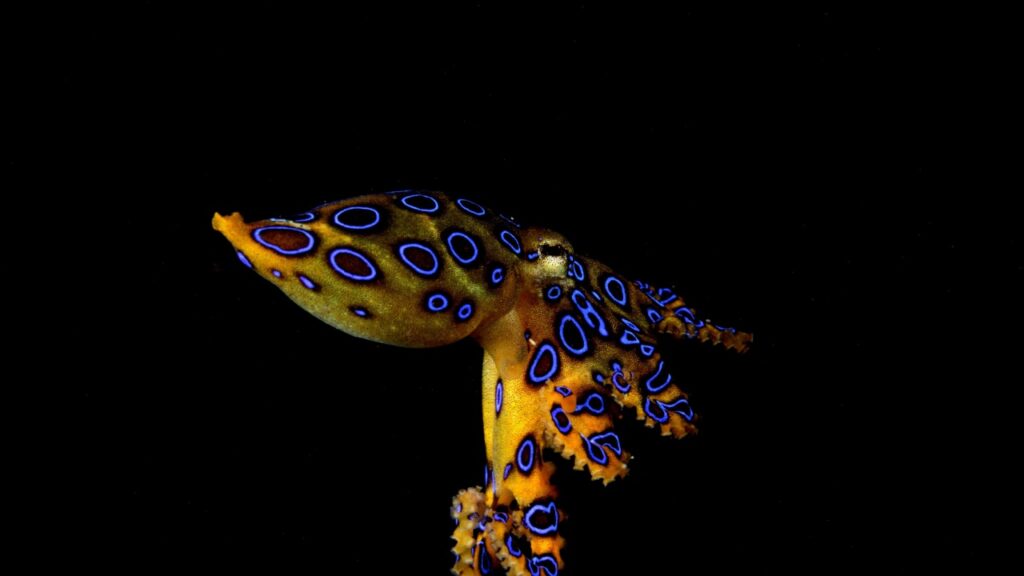The blue-ringed octopus might be small, but it packs a deadly punch. This beautiful yet dangerous creature inhabits the waters of the Pacific and Indian Oceans, captivating and terrifying observers in equal measure. Let’s dive into 13 surprising facts about this tiny terror of the seas.
Tiny But Terrible
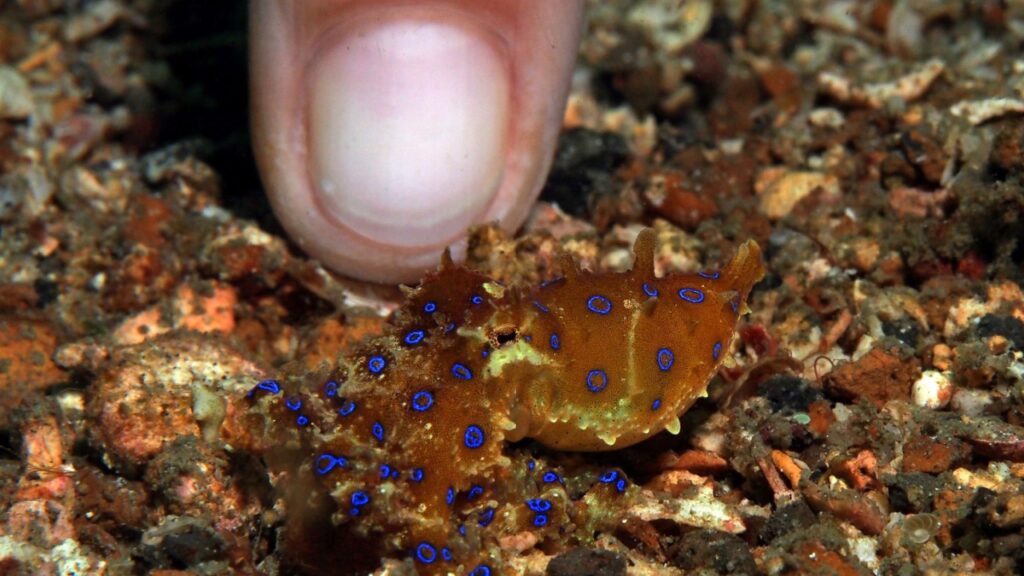
Don’t let its size fool you – the blue-ringed octopus is one of the deadliest animals in the ocean. Most species are only about the size of a golf ball, with the largest reaching just 20 centimeters (8 inches) in length. Despite their small stature, they carry enough venom to kill 26 adult humans within minutes. Their diminutive size makes them easy to overlook, adding to their danger.
A Venom Like No Other
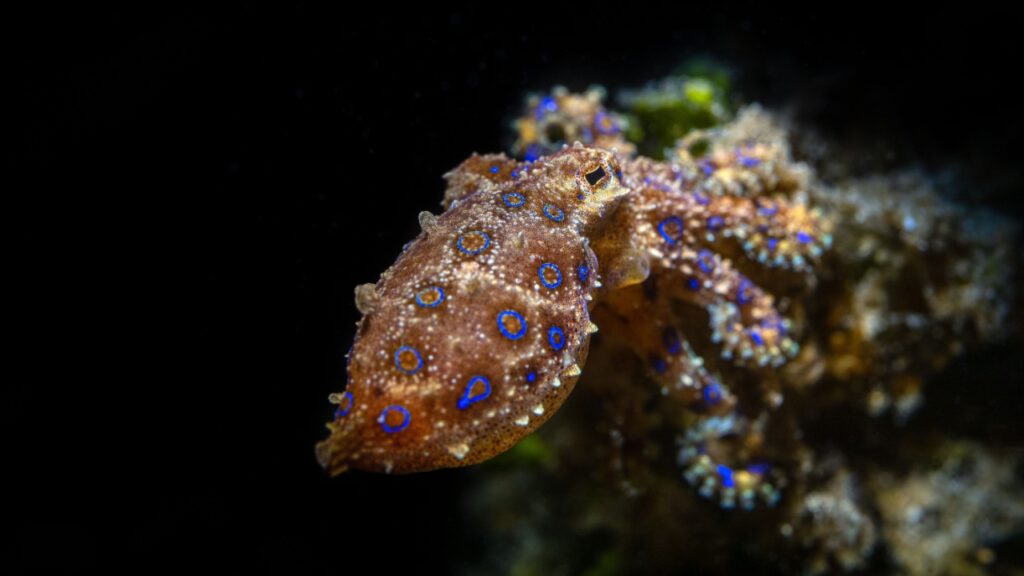
The blue-ringed octopus’s venom is a cocktail of toxins, but its secret weapon is tetrodotoxin. This powerful neurotoxin is 1,200 times more potent than cyanide. It works by paralyzing the victim’s muscles, including those used for breathing. Shockingly, there’s no known antidote. The only treatment is to keep the victim alive through artificial respiration until the toxin wears off.
Masters of Camouflage
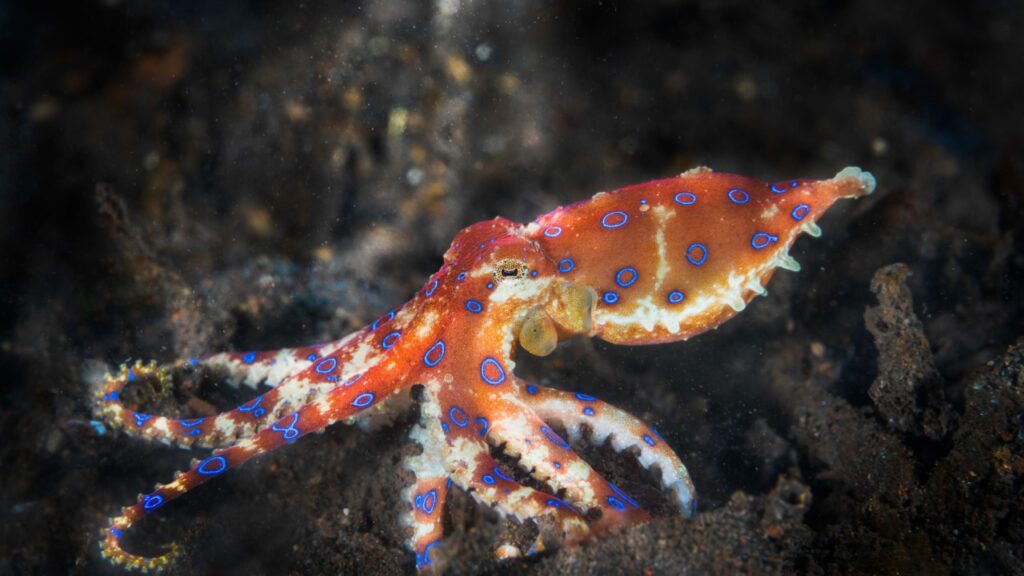
These octopuses are experts at blending in with their surroundings. They can change their color and texture to match rocks, coral, and sand. When threatened, they flash their brilliant blue rings as a warning. This rapid color change is achieved through special muscles that expand and contract pigment-filled sacs in their skin.
A Bite You Won’t Feel
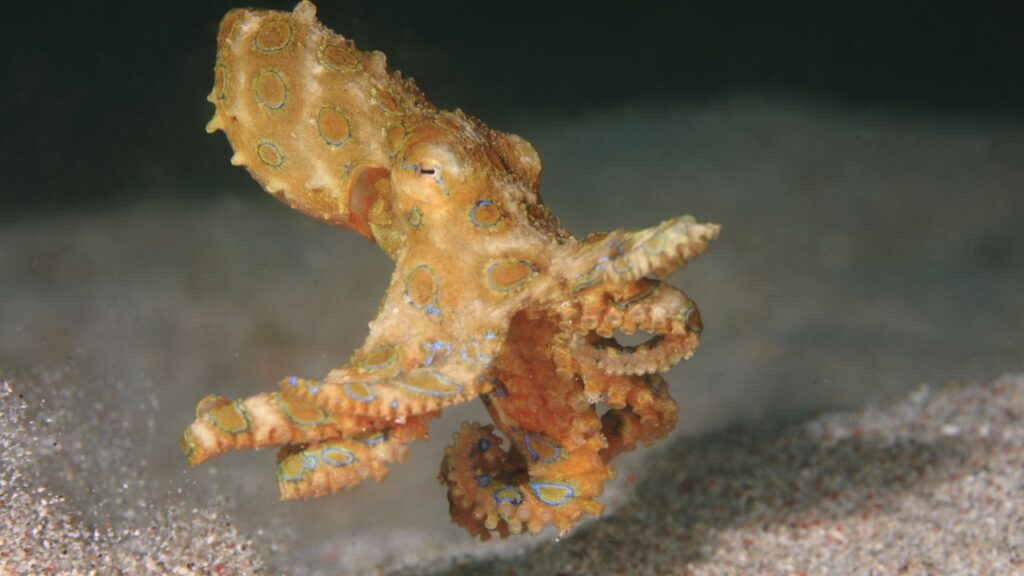
The blue-ringed octopus’s bite is so small and painless that many victims don’t even realize they’ve been bitten. The venom is injected through the octopus’s beak, which is hidden in the center of its arms. Symptoms can take minutes to hours to appear, often leading to delayed treatment. By the time symptoms show, it’s often too late.
Short But Sweet Life
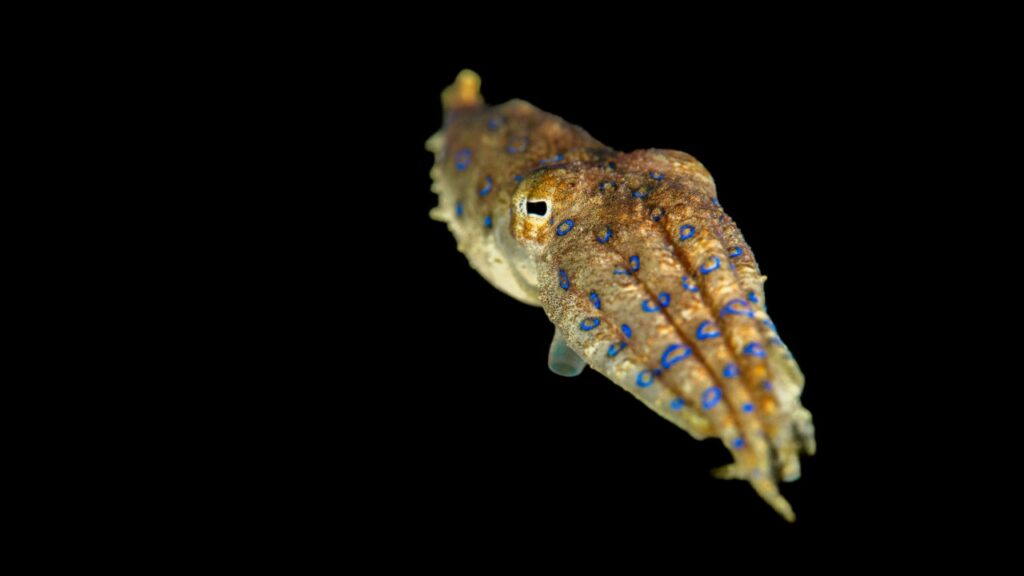
These octopuses live fast and die young. Their lifespan is only about two years. Females die shortly after laying their eggs, as they stop eating to guard their brood. Males die soon after mating. This short life cycle means they must grow and reproduce quickly, contributing to their aggressive hunting behavior.
Intelligent Hunters
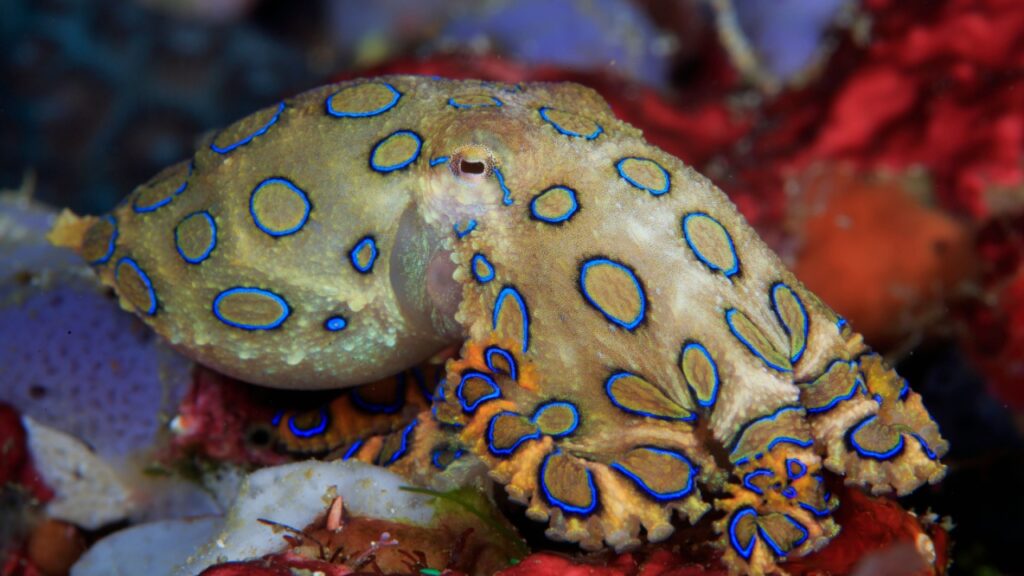
Despite their small size, blue-ringed octopuses are intelligent and skilled hunters. They use their arms to probe crevices and holes for prey. When they find a target, they pounce, enveloping it with their webbed arms. They then use their beak to pierce the prey’s shell or exoskeleton, injecting venom to paralyze it.
Three Hearts, Blue Blood
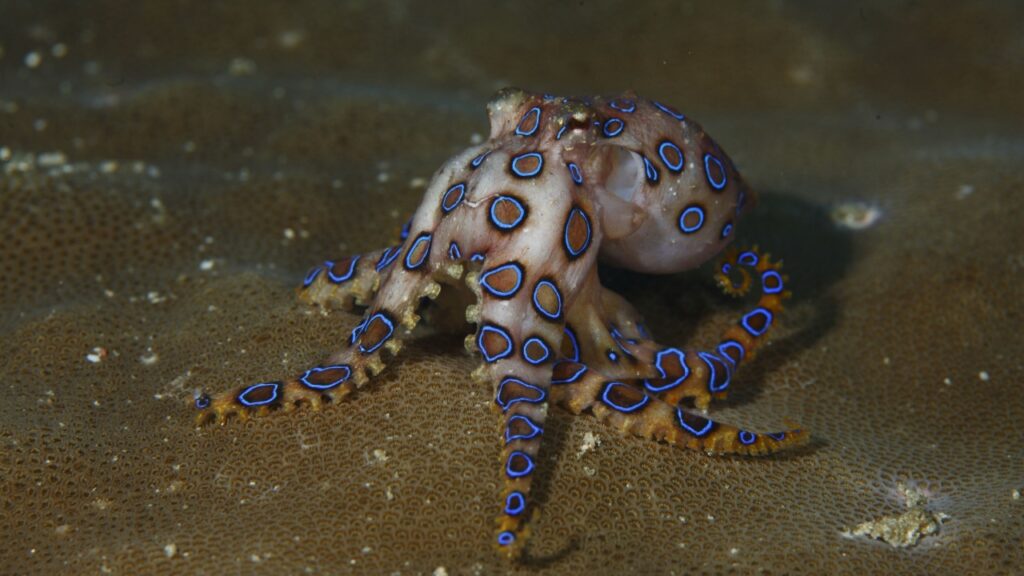
Like all octopuses, the blue-ringed variety has three hearts and blue blood. Two hearts pump blood through each of the two gills, while the third pumps blood through the body. Their blood is blue because it uses a copper-based protein called hemocyanin to carry oxygen, instead of the iron-based hemoglobin found in humans.
No Bones About It
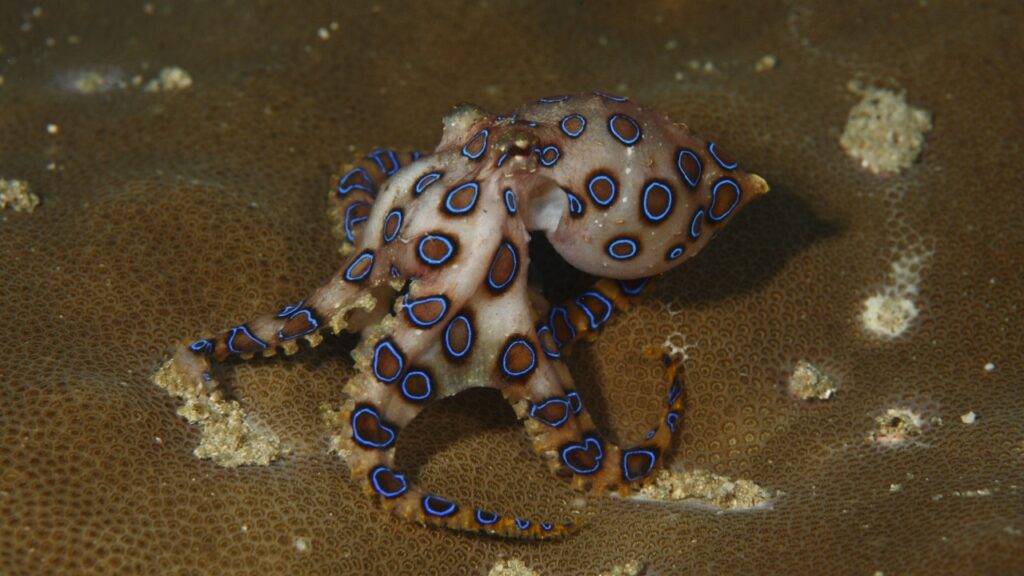
Blue-ringed octopuses have no internal or external skeleton. This allows them to squeeze through incredibly tiny spaces, as small as a quarter-inch wide. Their only hard part is their beak. This flexibility lets them escape predators and access prey in tight crevices where many other predators can’t reach.
Silent But Deadly
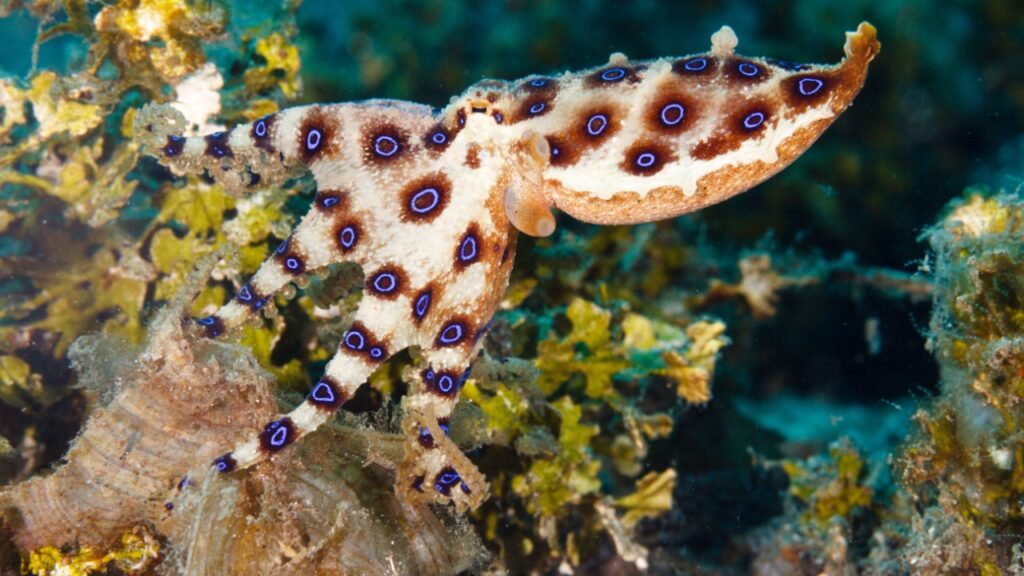
These octopuses are usually docile and will try to escape rather than confront a threat. However, if cornered or handled, they will bite. They don’t make any sound or show any obvious signs of aggression before striking. This silent defense mechanism makes them particularly dangerous to unsuspecting swimmers or divers.
Deadly Dining
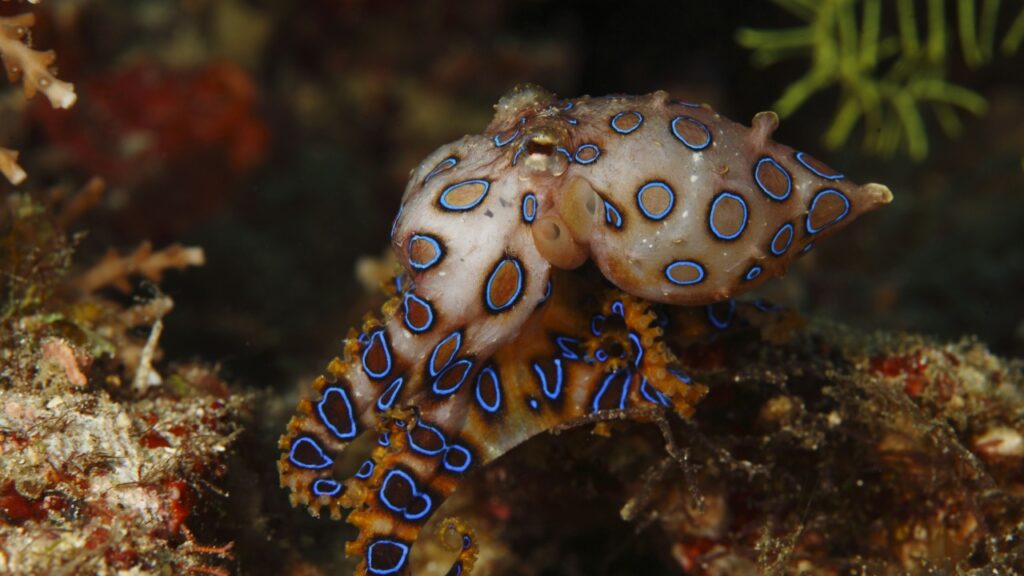
Blue-ringed octopuses don’t produce their own venom. Instead, they get it from bacteria that live in their salivary glands. They accumulate tetrodotoxin from eating toxic animals like pufferfish. This means their toxicity can vary depending on their diet, making some individuals more dangerous than others.
A Mother’s Ultimate Sacrifice
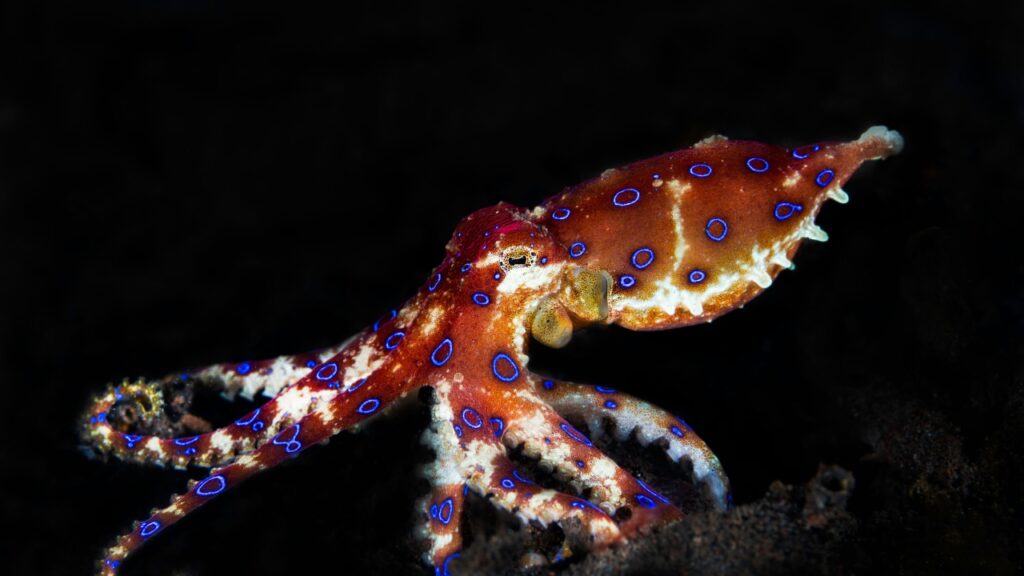
Female blue-ringed octopuses are devoted mothers. After laying up to 100 eggs, the mother stops eating and spends all her time caring for her eggs. She cleans them, aerates them, and protects them from predators. This dedication comes at a cost – she usually dies shortly after the eggs hatch.
Not For Aquariums
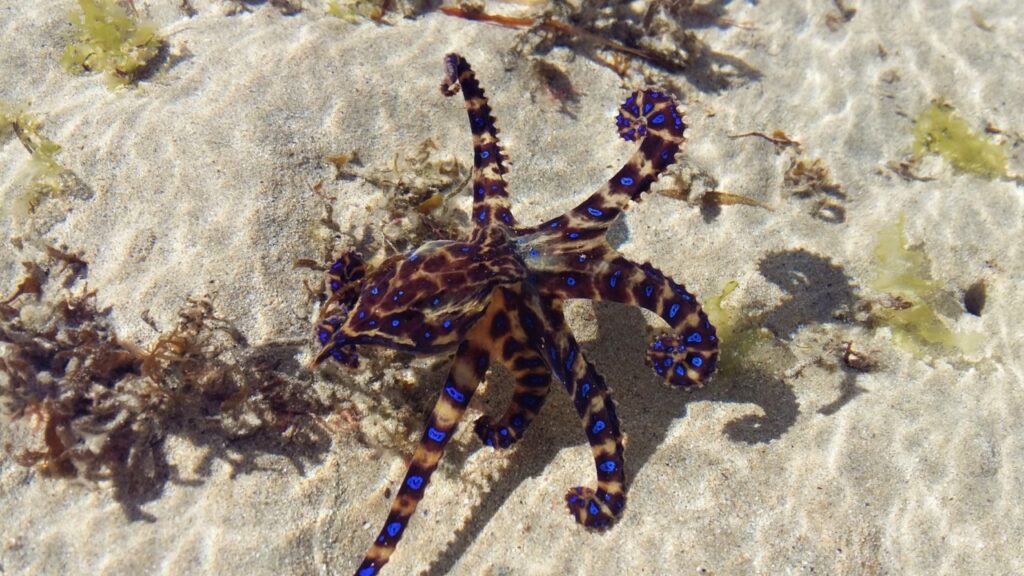
Despite their beauty, blue-ringed octopuses are not suitable pets. Their deadly venom makes them far too dangerous for home aquariums. In fact, many places have laws against keeping them in captivity. Their specialized care requirements and short lifespan also make them challenging to keep even for professionals.
Climate Change Threat
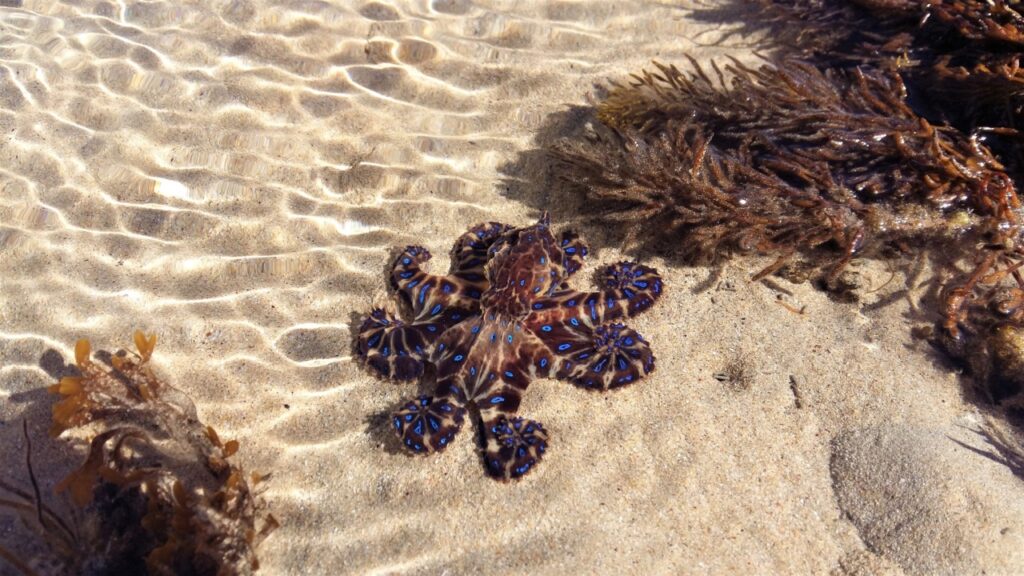
Like many marine species, blue-ringed octopuses are threatened by climate change. Rising ocean temperatures and acidification can affect their habitat and food sources. Changes in ocean chemistry could also impact the bacteria that produce their venom, potentially altering their defense mechanisms and ecological role.
Becky is a fervent wildlife enthusiast and pet care expert with a diploma in canine nutrition. Her love for animals stretches beyond the domestic, embracing the wild tapestry of global fauna. With over a decade of experience in animal welfare, Becky lends her expertise to OutlandishOwl through insightful articles, captivating wildlife information, and invaluable guidance on pet nutrition. Her work embodies a deep commitment to understanding the intricate lives of animals and a passion for educating others on sustaining natural habitats. Becky's hands-on conservation efforts and her knack for translating complex dietary science into practical pet feeding tips make her an indispensable voice for creatures great and small.

